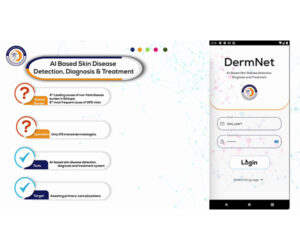In a world where industries like manufacturing, ecommerce and entertainment are already thriving with AI, the professional services industry stands on the brink of its own transformation.
Pragmatic AI is AI that focuses on real, tangible problems that businesses face today. It closes a loop through a virtuous cycle of capturing, aggregating, reasoning and surfacing data where people do work. Moreover, it is deployable with clear guidance on data, skill and digital maturity to ensure successful adoption and ROI.
In other words: Pragmatic AI targets real-world, current business problems rather than aspirational or flashy use cases. It gathers, processes and presents data in areas where people are doing work. It is user-friendly and designed for success, with measurable outcomes that help you calculate the return on your investment.
4 use cases that bust silos and drive profitable growth
While profitability is the goal of every business, Pragmatic AI is uncovering new frontiers on the path towards profitability. Below are just four generalized outcome-based examples based on interactions with our own customers. These highlight where Pragmatic AI solutions can help close a loop on the journey towards services business growth.
1. Improving predictable services delivery
Outcomes: Increased CSAT, NPS, and Project Margin % A leading IT services company has a major project deadline approaching, representing a material level of business for the quarter. The AI model analyzes past project performance, customer feedback, team dynamics, and external factors like industry trends to identify potential risks such as bottlenecks, resource allocation issues and even client dissatisfaction points before they happen. Based on these insights, services leaders can take proactive measures to reallocate resources, adjust project timelines and communicate transparently with clients, ensuring project success and client satisfaction.
2. Optimizing resource allocation
Outcomes: Increased CSAT, NPS, and Margin % An embedded services organization in a software development company, like any, wants to ensure margin and utilization targets are met when assigning resources to work. But it also values the career aspirations of its employees, the type of work they enjoy, and their working style to build great implementation teams of driven, happy individuals. The AI model analyzes historical data on resource allocation, and metrics associated with delivery success. It matches that with forward-looking data such as employee attributes and career goals to find the best consultant-project match across resource pools for your business, clients and employees.
3. Improving services margins
Outcomes: Increased NPS and Margin % A consulting firm offers various services packages to clients. The VP of Professional Services is planning for the next year and needs access to insights into which services offerings have the highest profit margins, and those that fare less well. The AI model analyzes historical data on resource allocation, time spent on each project phase and associated costs. It then suggests adjustments in resource allocation, project timelines or pricing structures to the packages on offer. As a result, the firm can optimize its services mix, focus on high-margin offerings and eliminate bottlenecks, leading to improved profitability. They can then build this into their headcount and other planning exercises to ensure upskilling and hiring to meet future demand.
4. Predicting and minimizing days to pay
Outcomes: Accurate cash flow forecasting A software development company relies on steady cash flow to manage its operations. The AI model analyzes past payment patterns, client behaviors, economic indicators, and other relevant data to forecast potential delays in payment and identifies clients who might extend their payment schedules. Armed with this information, the finance leader can implement targeted communication strategies to expedite payments or allocate resources accordingly, ensuring a stable, predictable cash flow.
Source: VentureBeat



